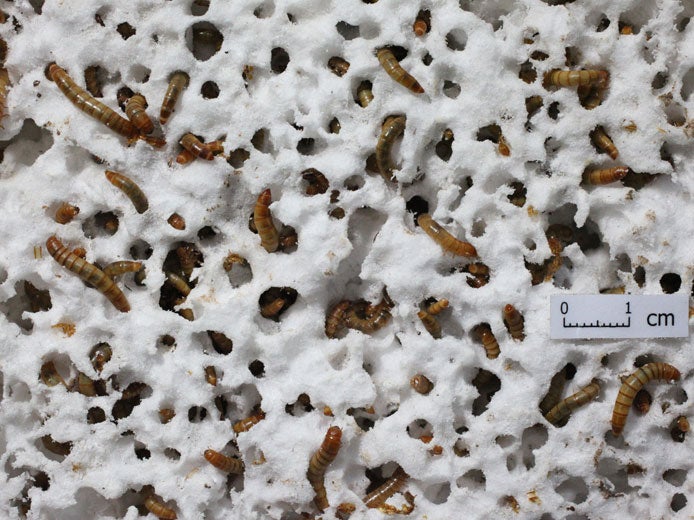Tiny worms may offer solution to the world's mounting plastic waste problem
Study suggests the worms can survive on plastic

Your support helps us to tell the story
From reproductive rights to climate change to Big Tech, The Independent is on the ground when the story is developing. Whether it's investigating the financials of Elon Musk's pro-Trump PAC or producing our latest documentary, 'The A Word', which shines a light on the American women fighting for reproductive rights, we know how important it is to parse out the facts from the messaging.
At such a critical moment in US history, we need reporters on the ground. Your donation allows us to keep sending journalists to speak to both sides of the story.
The Independent is trusted by Americans across the entire political spectrum. And unlike many other quality news outlets, we choose not to lock Americans out of our reporting and analysis with paywalls. We believe quality journalism should be available to everyone, paid for by those who can afford it.
Your support makes all the difference.The humble mealworm could hold an answer to recycling plastic waste - one of the biggest contributors to global pollution.
Microorganisms inside the tiny worm's gut are able to biodegrade plastic, allowing it to survive on a diet of Styrofoam and other forms of polystyrene, researchers at Stanford University in California found.
“Our findings have opened a new door to solve the global plastic pollution problem," said Professor Wei-Min Wu, a senior research engineer in the Department of Civil and Environmental Engineering at Stanford.
Two studies, co-authored by Dr Wu and published in Environmental Science and Technology, are the first to provide detailed evidence of bacterial degradation of plastic in an animal’s gut.
In the lab, 100 mealworms ate between 34 and 39 milligrams of Styrofoam, roughly the weight of a small pill, a day.
The worms converted about half the Styrofoam into carbon dioxide, as they would with any other food source and excreted the bulk of the remaining plastic as biodegraded fragments.
The mealworms fed a steady diet of Styrofoam were as healthy as those eating a normal diet and their waste appeared to be safe to use on plants and crops, Dr Wu said.
Earlier research found that waxworms, the larvae of Indian mealmoths, have microorganisms in their guts able to biodegrade polythene, a plastic used in filmy products such as rubbish bags.
The new research on mealworms is significant, however, as Styrofoam was thought to be non-biodegradable and more problematic for the environment.
Scientists hope that by understanding the mechanisms inside the mealworm’s gut new ways of degrading plastic waste or producing plastic that can be easily biodegraded, can be found.
The world's annual consumption of plastic materials has increased from around 5 million tonnes in the 1950s to nearly 100 million tonnes today, according to WRAP.
The British Plastic Federation estimate that nearly 5 million tonnes of plastic waste is generated by the UK each year, of which only 24 per cent is recycled.
Join our commenting forum
Join thought-provoking conversations, follow other Independent readers and see their replies
Comments